Future of Generative AI: Promises with Continued Research and Development
Large tech companies are leading the revolution in this fast expansion, which is being pushed by the growing need for innovative technologies like text-to-image and text-to-video conversion and higher resolution across a variety of industries.
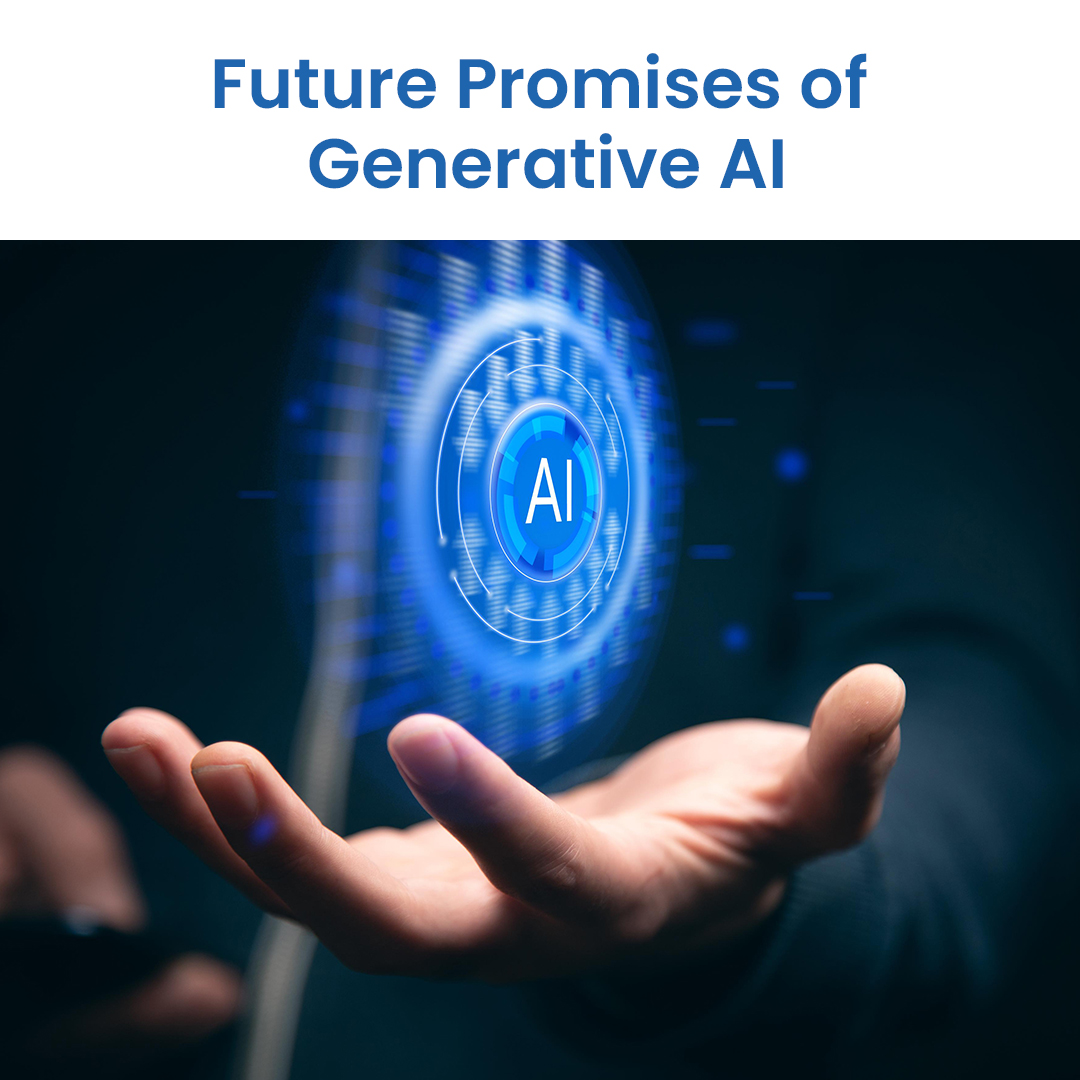
Wasting Time on Manual Analysis? Let Our Generative AI Development Services in New York Extract Insights from Complex Data Instantly

“Although general-purpose models perform well across a broad set of applications, demand for Gen AI is rising in many sectors. Combined with the increased availability of high-performing and commercially usable open-source large language models, there is an appetite for domain-specific models. By 2027, more than 50% of the Gen AI models that enterprises use will be specific to either an industry or business function — up from approximately 1% in 2023.”– Gartner
Quantifiable Impact Areas CEOs Care About: Fuelling Growth Through Speed, Personalization, and Innovation
Generative AI isn’t just another shiny tech upgrade; it’s a significant business growth engine. For CEOs, it’s time to look beyond the hype and into the numbers. Gen AI is reshaping how companies grow revenue, cut costs, and move faster. It touches everything from product development to personalized marketing. The key? Understanding exactly where it impacts your P&L and using that insight to drive smarter, faster decisions across the board.
1. Faster Go-To-Market (GTM)
The future of generative AI compresses product cycles and launch timelines.
- AI-powered content engines create campaign material in minutes.
- Automated customer research shortens feedback loops.
- Marketing teams iterate faster with A/B content generated on the fly.
- Sales enablement assets are produced and customized at scale.
2. Hyper Personalization at Scale
Generative AI enables truly personalized experiences at scale, built around each customer’s behavior, preferences, and intent.
- AI tailor’s product recommendations based on real-time behavior and sentiment.
- Dynamic pricing engines respond to demand, boosting conversions.
- AI agents handle support, guide purchases, and resolve issues—24/7, with context.
- Customized onboarding boosts engagement and retention.
3. Innovation-Driven Revenue Models
Generative AI is opening doors to business opportunities that didn’t exist before. Here’s how companies are turning advanced AI into real revenue:
- Packaging internal Gen AI tools as standalone SaaS products for new markets.
- Unlocking fresh revenue streams through AI-generated IP, content, designs, code, and more.
- Using AI to uncover hidden customer needs and inform smarter product strategies.
- Slashing innovation cycles by 30–50% with always-on AI copilots.
Are You Building Value or Just Piloting Hype? How to Validate Gen AI with Business Outcomes in Mind
Too many leaders are stuck in experimentation mode. Here’s how to test Gen AI’s real enterprise value, strategically. Generative AI projects are everywhere. But pilots alone don’t prove value. The future of generative AI in your organization depends on whether it can scale from isolated use cases to measurable impact.
Instead of waiting for perfect conditions or overinvesting in R&D upfront, use these proven strategies to test Gen AI cost-effectively and meaningfully:
1. Tie Gen AI to Business KPIs Early
Before investing heavily in generative AI, anchor it to outcomes your leadership team already tracks. Skip the sandbox experiments, tie every initiative to real business value from day one.
- Gen AI-driven content can increase revenue per campaign, improving overall marketing ROI.
- AI chat summarization reduces agent handle time, driving operational efficiency in support functions.
- AI copilots in R&D shorten product development cycles, accelerating innovation and time to market.
- Personalized AI recommendations boost conversion rates, enhancing customer acquisition and lifetime value.
2. Use Shadow Deployment Models
You don’t need to go all-in on day one. Shadow deployment lets you test Gen AI’s effectiveness without disrupting live operations or risking brand reputation.
- Operate human and Gen AI workflows in parallel to measure quality, speed, and efficiency.
- This approach gives your leadership team real data on performance, without putting customer experience on the line.
3. Create a Central ‘AI Test Lab’
Scattered pilots and siloed experiments waste time and resources. A centralized AI test lab brings structure, speed, and accountability to your Gen AI initiatives.
- Establish a cross-functional hub with shared tools, infrastructure, and evaluation criteria.
- Align every experiment with standardized success metrics and built-in governance to ensure compliance and consistency.
- Include business stakeholders, not just data scientists, so solutions are aligned with real-world needs.
- Track performance across departments to identify high-impact use cases and guide smart scaling decisions.
Generative AI Healthcare & Drug Discovery Use Case
- Generative AI can help in analyzing huge datasets of genes and proteins, and clinical chemical compounds used in existing drugs. Models trained on protein structure can identify proteins that are causing a particular disease using pattern matching.
- Generative AI models have started taking the role of novel compound structure discovery using Variational Autoencoders, GANs, and Transformers. They can create drugs with various properties such as selectivity, activity, solubility, etc. Thus, tasks that need slow trial-and-error methods can be taken up by Gen AI models and achieve the same task for new drug discovery in a short period.
- Gen AI models can also help in analyzing the generated compounds on properties such as toxicity and ADME (absorption, distribution, metabolism, excretion) properties. This will help save clinical testing time. This also helps by knowing the drug’s side effects before animal or human testing.
- A simplified Molecular Input Line Entry System (SMILES) is a line structure describing a chemical structure with short ASCII strings. For example, cyclohexane is encoded as C1CCCCC1. These SMILES form text inputs to train Gen AI models and generate new SMILES codes for prescribed new drugs. Entirely new biological structures can be predicted based on the bonding abilities of various compounds that can fit a biological target.
- Gen AI models will also prove useful for synthetic patient data to simulate the effect of new drugs. It can scan existing drug literature and suggest alternate usage of existing drugs. Research is ongoing in this field, and it is hoped that the major points discussed above to generate new drug compounds and simulate testing for a new virus or bacterial disease in a brief period to give relief to patients from long waits like COVID-like scenarios.
Eliminate Workflow Inefficiencies Using Our Generative AI Solutions to Automate, Streamline, and Optimize Complex Processes
The Next Frontier: 7 Actionable Generative AI Future Trends You Can’t Ignore
The future of generative AI is evolving fast, reshaping how businesses operate, create, and compete. These seven actionable trends highlight what’s coming next and how forward-thinking leaders can harness them to unlock innovation, boost efficiency, and stay ahead.
 1. Multimodal Approach
1. Multimodal Approach
Applications of generative AI are shifting toward smooth multimodal AI integration. It is observed that more emphasis is being placed on multimodal data for AI models, which can simultaneously process images, text, video, sound, and other modalities. A crucial step forward, this integration opens the door to the creation of interactive and all-encompassing generative systems.
The potential to simultaneously create information across several media forms, resulting in a harmonious convergence of textual, visual, and audio aspects, is something that these futuristic models are set to demonstrate. In addition to increasing the adaptability of generative systems, the integration of many modalities creates new opportunities for producing immersive, rich content experiences. It transcends conventional limits and engages users through a variety of sensory channels.
2. Enhanced Customization & Control
The emphasis is shifting toward greater control and customization as the future of generative AI systems becomes more widespread. Giving users more control over the outputs produced by these systems and extensive customization possibilities is the focus of this change. By using a more advanced approach of prompt engineering, users can modify their preferred style and fine-tune the created content’s specificity.
By giving consumers more control over the type and attributes of the content created, the ultimate objective is to offer a more customized and individualized experience. This trend shows a dedication to understanding user preferences, encouraging user agency, and improving generative technologies’ flexibility.
3. Domain-Specific Generative Models
Domain-specific generative model creation is at the forefront of generative AI techniques. The development of more specialized generative models that are meticulously customized for specific industries or businesses is what this trend forecasts. By demonstrating a deeper comprehension of the context and subtleties inherent in their specified disciplines, these models are expected to surpass generalist capabilities.
A more accurate, customized, and domain-specific content production outcome is anticipated. These specialized generative models are designed to produce outputs that are not only contextually accurate but also sensitive to the requirements and complexities of the targeted domain.
4. Ethical & Bias Mitigation
Ethical and bias mitigation is a crucial requirement in generative AI. In the future, it will be crucial to address biases in generating outputs and ethical issues head-on. Implementing controls to stop the inadvertent amplification of biases included in training data should be a top priority for developers.
The goal of this commitment is to promote the responsible and equitable use of generative models while making sure that the technology complies with moral principles and doesn’t reinforce any biases that could be present in the data. The future of generative AI involves a proactive and diligent strategy to address moral dilemmas, encouraging equity, openness, and moral considerations in the creation and application of generative technology.
5. Growing Adoption of AI as a Service
With the popularity of AI as a Service (AIaaS) in AI and machine learning, the generative AI revolution is beginning to gain traction. As Gen AI technologies acquire momentum, companies that are reluctant to invest in building their infrastructure may look for outside help. A custom generative AI development services provider will be essential for those who need expert help without having to shell out a large sum of money up front. They can help you decide which options are ideal for your business before you invest in AI solutions.
With more AI providers providing open-source, customized models that meet a range of business requirements, AI Modeling as a Service (AIMaaS) is anticipated to flourish. To assist companies in using generative AI more successfully and securely, these services are going to broaden their scope to encompass crucial components like AI governance, security, and integration support. This trend will make it possible for more businesses to employ AI without having to hire specialists internally.
6. Emergence of Smaller Language Models
According to projections, the LLM market will increase from $6.4 billion in 2024 to $36.1 billion by 2030. Despite this quick growth, there is a noticeable change occurring: AI firms are now focusing on smaller language models (SLMs). Despite having billions of parameters, the huge language model used by Gen AI chatbots today is frequently too costly and hard for many businesses to develop and manage.
On the other hand, smaller models are more affordable and simpler to operate, which makes them a desirable substitute. With far lower computational requirements, these small models provide comparable capabilities to bigger ones.
Furthermore, SLMs can be trained on more specialized, smaller datasets, which saves money and time compared to large LLMs that need a lot of training data. For apps that concentrate on tasks or domains, this makes them especially well-suited.
We may anticipate Gen AI becoming increasingly integrated into commonplace devices and applications as more businesses use SLMs. All the while lowering the resource requirements usually connected with large-scale AI applications.
7. Progress Toward AGI & Related Research
In the tech world right now, artificial general intelligence is a hot topic. It is expected to perform most activities and critical thinking on par with humans. Adept AI, OpenAI, Meta, and Google’s DeepMind are leading the way in this field of study. Still, there is a great deal of disagreement regarding the actual definition and future of AGI.
Now, most AGI research has been conducted independently. As businesses attempt to develop a common concept and framework for AGI, this industry will become increasingly cooperative in the future. Although it might still be years before we achieve full AGI, developments in generative AI will help us get there by promoting more precise definitions and goals.
Scale Enterprise Operations Efficiently with Adaptive Generative AI Software Designed for Flexibility and ROI
Why CEOs Must Own the AI Ethics and Compliance Narrative
AI is powerful, but without trust, it’s a liability. CEOs can’t afford to delegate ethics and compliance to IT alone. This is a board-level issue.
1. Customers Demand Transparency
Customers now expect full transparency around data usage. Generative AI models often rely on personal or sensitive data, making consent and compliance non-negotiable. Any misuse can trigger legal action and rapidly erode brand trust.
CEOs must ensure that transparency policies are technically sound, easily understandable, and publicly accessible. This reinforces data ethics as a core part of corporate governance and customer loyalty.
2. Regulators Are Watching Closely
AI regulations are evolving rapidly, with the EU AI Act and U.S. frameworks like HIPAA and emerging FTC guidelines setting stricter standards for compliance. Enforcement is increasing, and violations can lead to substantial fines and legal consequences.
CEOs must lead in establishing enterprise-wide AI governance, ensure models are auditable, and implement regular third-party assessments. It helps in staying compliant across jurisdictions and maintaining stakeholder trust.
3. Your Brand Reputation Is on the Line
AI ethics is now a core pillar of ESG strategy and corporate accountability. Biased outputs or model misalignment can quickly escalate into reputational crises, regulatory scrutiny, or loss of stakeholder confidence. U.S. boards and investors increasingly demand transparent, proactive AI risk management.
CEOs must support ethical AI methods, from model alignment to bias reduction. It makes sure that moral principles are ingrained in the development, implementation, and decision-making of products.
Wrapping Up
With its exceptional levels of productivity, efficiency, and development, the future of generative AI has enormous potential in several industries. This technology will change the way businesses function as it develops further.
Adopting generative AI is a more liberated form of artistic expression as well as technological progress. The enormous potential advantages outweigh the remaining difficulties, such as ensuring responsible development and resolving any biases. We can utilize this innovative technology to improve society as long as generative AI technology doesn’t replace people but rather expands their capacities.
Every technology comes with possibilities and responsibilities. While debates on the future of strong AI will continue, one thing is clear: businesses today can unlock real value by embracing intelligent automation. At NextGen Invent, we’re here to help you turn bold ideas into practical solutions. With our generative AI development services in New York, we’re ready to build what’s next, together. Let’s shape the future, not just watch it unfold.
Frequently Asked Questions About The Future of Generative AI
Related Blogs
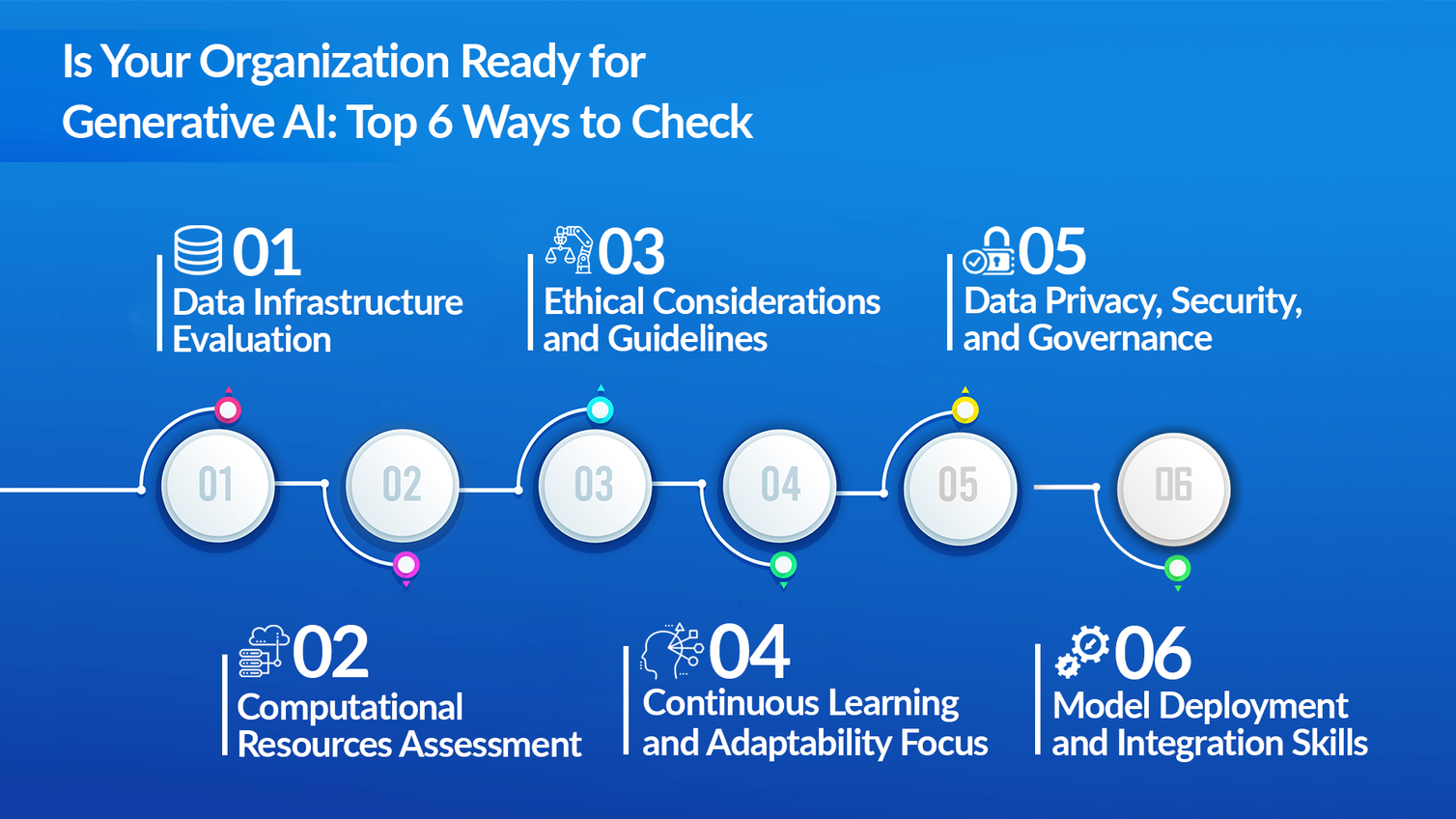
Is Your Organization Ready for Generative AI?
Generative AI is transforming the field of artificial intelligence by simulating human speech and decision-making. Its potential to revolutionize various industries, including production design, design research, visual identity...
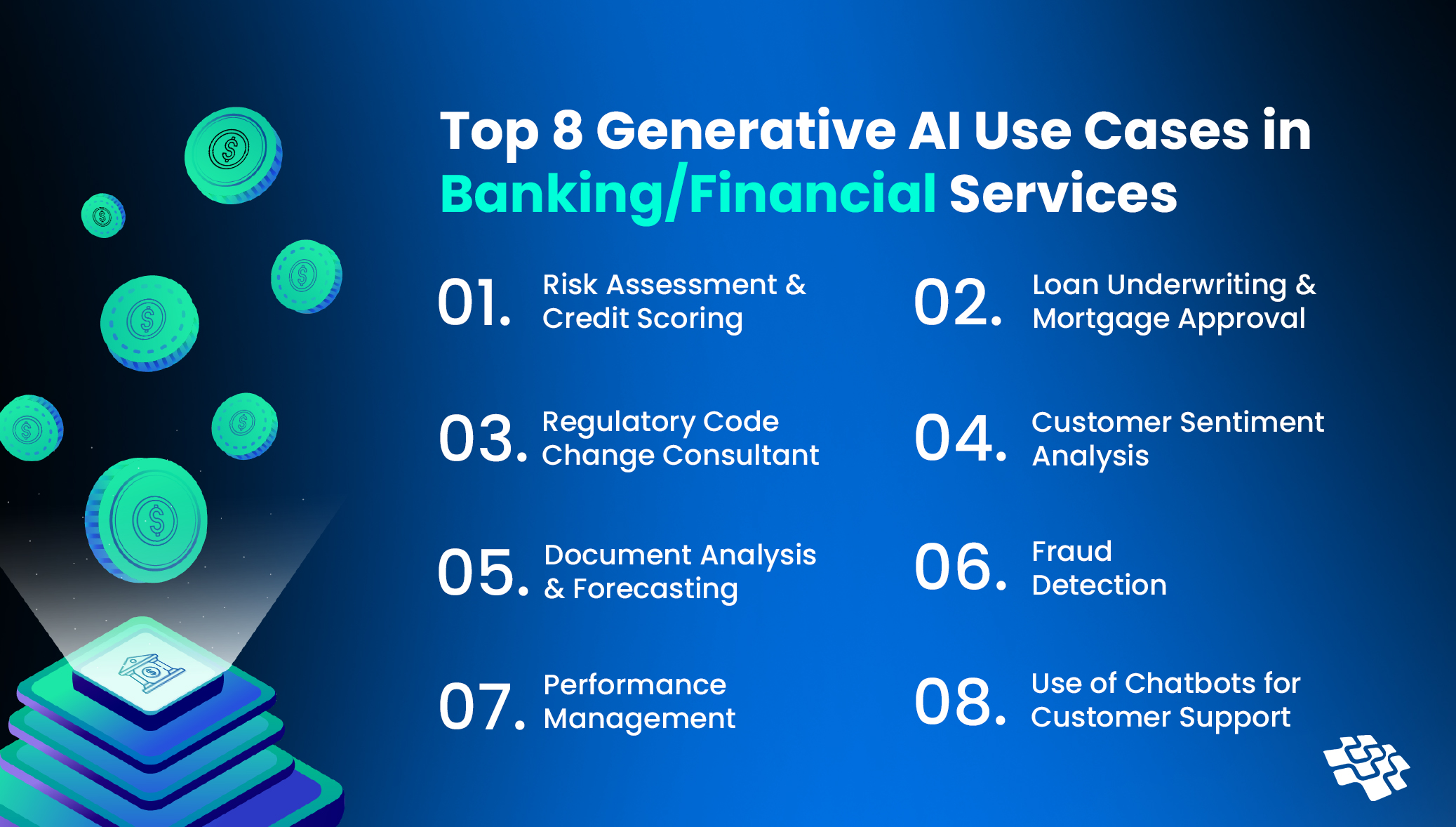
How Generative AI in Finance is Solving Cash Flow and Valuation Challenges?
The way that business and finance are currently conducted could be revolutionized by generative AI. Time and financial commitment up front, along with CFO leadership, will be necessary for implementation.
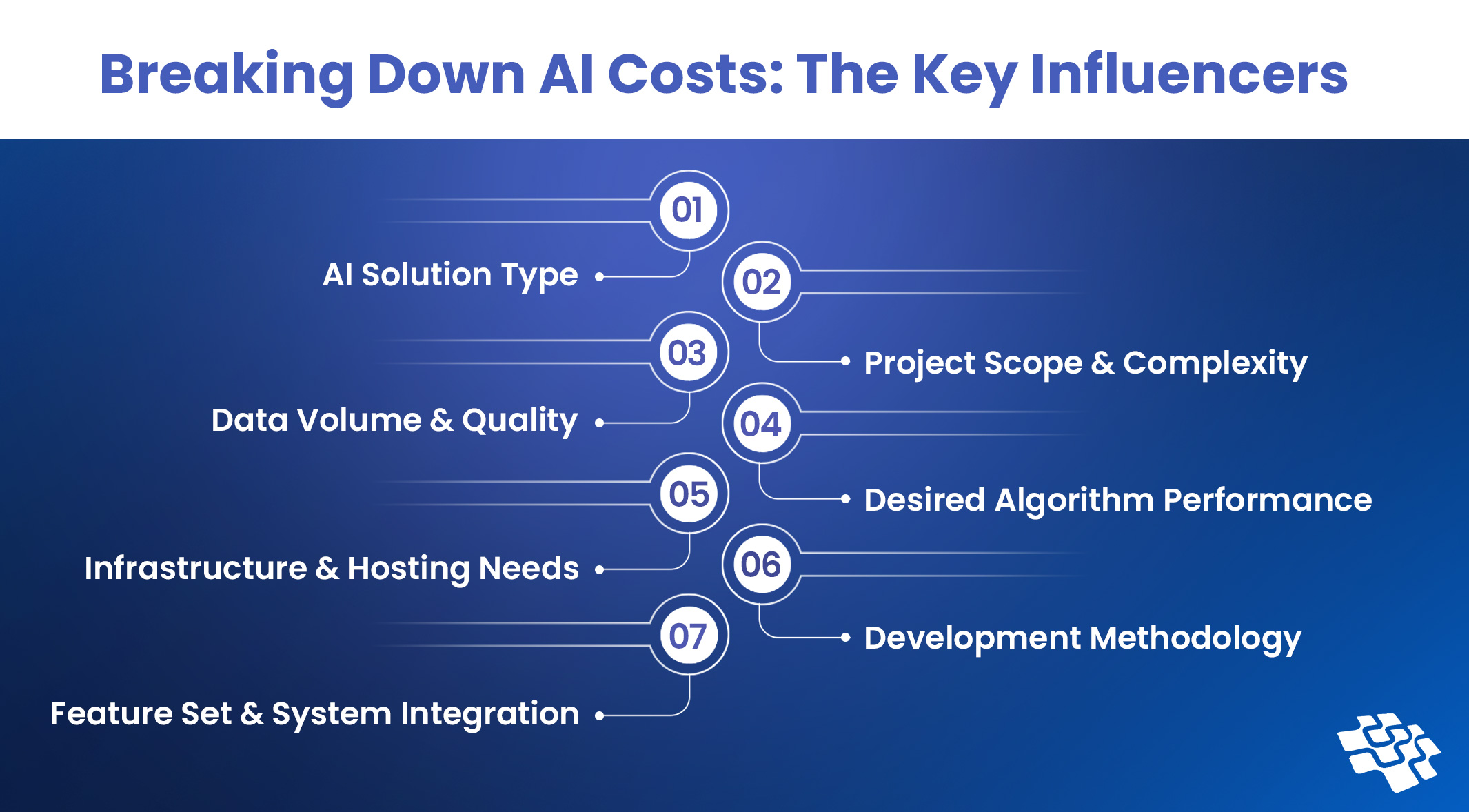
AI Pricing: How Much Does AI Development Cost
According to recent surveys, companies will keep giving AI and Gen AI top priority in the years to come. The rationale is that AI technologies can enhance data security, expedite recruitment, and improve freight management.
Stay In the Know
Get Latest updates and industry insights every month.
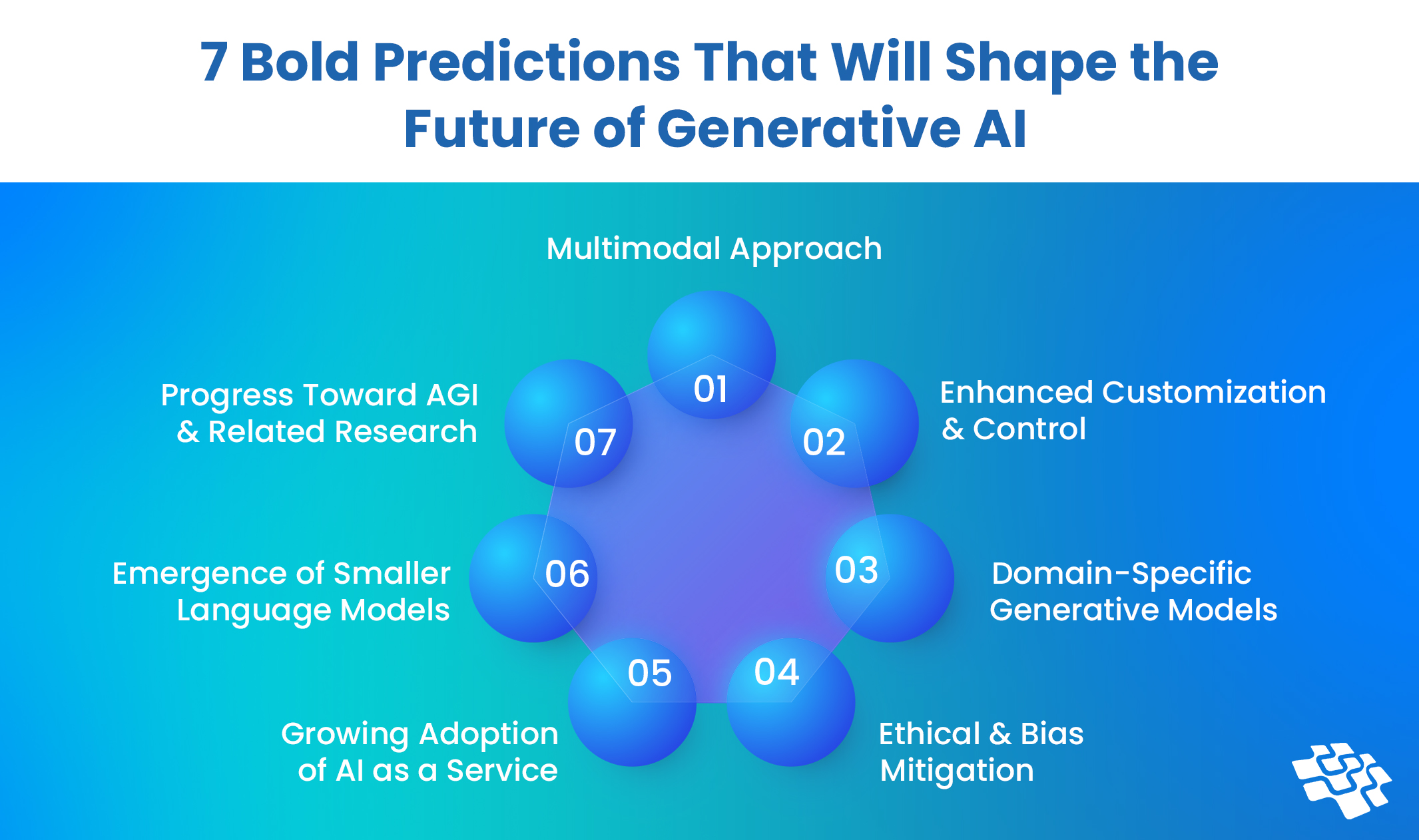 1. Multimodal Approach
1. Multimodal Approach